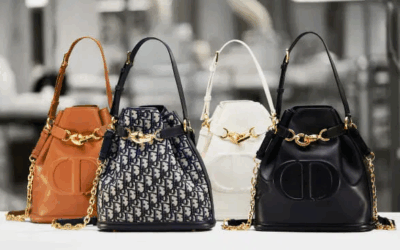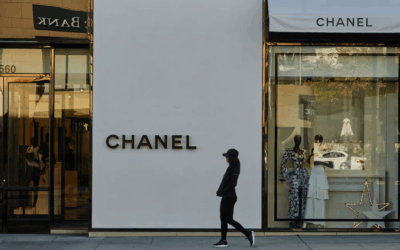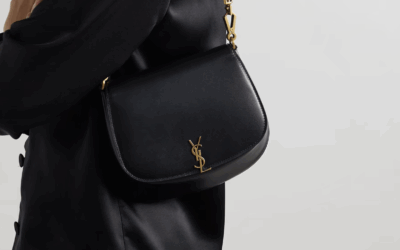 Embark on a Cosmic Journey Through the Paradoxes of Luxury and Dupes
Embark on a Cosmic Journey Through the Paradoxes of Luxury and Dupes
The Devil Wears Vintage: Why Fashion Houses Are Freaking Out Over Resale
by Thea Elle | August 5, 2025 | Luxury Industrial Complex
Luxury fashion’s got amnesia—and it’s pretty convenient. Back in the day, designer bags were handed off backstage like secrets: gifted to stylists, assistants, and insiders with zero fuss. These bags weren’t for shelves, but they weren’t trash either. Now that resale is hot and consumers care more about sustainability than status, the same brands are panicking. CHANEL’s lawsuit against What Goes Around Comes Around isn’t about fakes—it’s about flexing control. Suddenly, vintage bags are the enemy just because they’re thriving outside the boutique bubble.

“Timeless,” With an Asterisk
Luxury brands love to talk about being timeless. Every campaign leans into the same buzzwords: legacy, longevity, investment. A CHANEL bag isn’t just something you wear—it’s something you pass down. But that whole narrative starts to unravel the moment one of these so-called timeless pieces pops up outside the official retail bubble. Suddenly, the reverent tone shifts. That bag? It’s no longer iconic—it’s “unofficial.” “Unauthorized.” Somehow less than, just because it’s being sold by someone who isn’t the brand.

Here’s the contradiction: these bags were celebrated in their time. They walked red carpets. They were styled in photo shoots. They were literally the face of the brand. And now? The moment they’re listed by a reseller or collector, they’re treated like designer bootlegs. Not because they’re fake—but because they’re outside the company’s control. The issue isn’t authenticity—it’s ownership of the narrative. The resale market doesn’t threaten brand value; it threatens brand monopoly. And for companies used to total control, that’s the real danger.
Why the Pieces Left Behind Might Matter the Most
In the world of fashion, resale bags are more than accessories—they’re artifacts. Each one whispers details the runway never revealed: a test fabric here, an experimental clasp there, a silhouette that changed halfway through production. They’re pieces of the process, footprints in the evolution of a season. To pretend they lose their value once they leave the showroom is to mistake fashion for a product rather than a practice.
Explore New Arrivals Here

Brands that try to erase these items from circulation aren’t preserving design—they’re censoring memory. What we see on the shelves is the final draft, but the archive includes the edits. These bags document what once mattered to the house: the ideas it pursued, even if only briefly. Keeping them in circulation doesn’t dilute the brand; it deepens the story. So when these pieces are silenced, the loss isn’t just commercial—it’s cultural.
The Second Life of Luxury
Luxury has always thrived on reinvention—except when it comes to ownership. Today, brands recite the language of sustainability with confidence: circularity, eco-consciousness, longevity. But resale bags, paradoxically, are excluded from this vision. They carry no environmental cost, require no new production, and yet they’re treated as contaminants in the luxury narrative. This isn’t about ethics. It’s about who gets to shape the story.
What resale really reveals is a shift in cultural power. The boutique is no longer the final authority. A bag’s value can be defined by a collector, a curator, or an everyday buyer who sees its beauty through a different lens. The fear is not of counterfeits—it’s of reinterpretation. Resale dissolves hierarchy. It proves that luxury can evolve from below, not just from above. And in that disruption lies fashion’s most honest sustainability.

Eveningwear infused with texture, movement, and couture precision
Authenticity Policed, Not Protected
Luxury brands are increasingly using legal action as a stage for values they don’t consistently practice. While they speak the language of consumer care, the mechanics of their lawsuits reveal something else: fear of decentralization. Buyers today aren’t confused. They know the difference between a reseller and a flagship store. The lawsuits don’t aim to clarify—they aim to contain. Platforms that amplify resale threaten a system where exclusivity is tightly scripted and ruthlessly enforced.
True consumer protection empowers knowledge and access. But when a resale item—genuine, traceable, and rare—is erased from the market for not passing through official channels, the brand isn’t shielding the public. It’s shielding itself. The cost of that erasure is borne by the independent seller and the engaged buyer, both of whom operate outside the brand’s control but within its history. In the end, what’s being protected isn’t the customer—it’s the illusion of untouchable legacy.
The Quiet Rebellion of Knowing What You’re Buying
In the age of endless branding, consumers are often sold the illusion that value is aesthetic. Dust bags, receipts, and showroom lighting create a fiction of luxury—but they don’t make the product itself more meaningful. Resale offers a different intimacy. A bag may arrive without fanfare, but with it comes fingerprints of a collection, the echo of design conversations, the mood of a season. It is not just a product—it’s a document.
There’s truth in secondhand that luxury rarely admits. In resale, the narrative is less polished but more real. The boutique gives you the myth. The resale gives you the artifact. Choosing secondhand is not about sacrifice. It’s about seeing what’s underneath the surface. And in that honesty lies a different kind of elegance.
Legacy in Motion
Luxury doesn’t fade when it leaves the boutique. It evolves. When a resale piece moves from one person to another, it continues its story—often in richer, more personal ways. To resist that movement is to misunderstand the nature of fashion itself. Fashion is not static. It is worn, weathered, reimagined.
The fear of resale is a fear of losing control over the script. But heritage isn’t protected by keeping it locked away. It’s preserved by letting it circulate, be loved again, and mean something new. The secondhand market doesn’t dilute fashion’s value—it deepens it. That’s not the end of luxury. That’s its future.




0 Comments